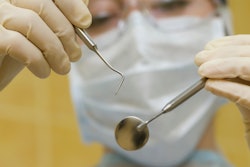
Dental care is a crucial aspect of overall health and well-being, yet a recent study showed that many respondents perceive treatment to be unaffordable. This finding, combined with a lack of understanding of dental benefits and the cost of care, impact patients’ decisions when it comes to scheduling and keeping appointments and accepting recommended dentistry.
The "Dental Lifetime of Care Study" conducted by Synchrony on behalf of CareCredit surveyed more than 1,000 adults in the U.S. to understand their attitudes and behaviors regarding dental care. Participants ranged in age from 18 to 75 and represented a diverse range of backgrounds and income levels. Here are some topline findings:
- Cost perceptions: Fifty-eight percent of respondents with dental benefits said that dentistry was not affordable. That number increased to 75% for those respondents without benefits to contribute to the cost of care.
- Lack of understanding: For respondents who had dental benefits, 1 out of 2 did not know their annual maximum and only 30% of respondents found it easy to understand the cost of dentistry.
- Patients are unprepared: Forty-six percent of respondents said they were not prepared for the cost of their largest dental expense, which ranged from exams to implants. And 3 out of 4 don’t actively save for dental care.
- Cost impacts care decisions: The most outstanding findings were that 92% of respondents would consider putting off general dental care because of the costs, and 83% would consider holding off on emergency dental care because of the costs.
- Financing solutions may help: Fifty-eight percent of respondents indicated that they would be probably or definitely choose a payment option that provided predictable, set, equal payments without having to use their general purpose or retail credit cards.
Implications for dentists and dental team members
Dentists and dental team members can play a crucial role in educating patients about how their benefits contribute to the cost of care and being transparent and clear on the cost of care. By emphasizing preventive measures and financial concerns, providers can help patients maintain optimal dental health throughout their lives.
With all of this in mind, I recently spoke with Synchrony’s Matt Muscolo and Dr. Brian Harris to discuss what the numbers mean to them and how dentistry can improve access to care. You can hear our podcast below. This episode is the first of a CareCredit-sponsored series that will be a yearlong deep dive into numbers and trends that dental practices need to know.
You can view the study here.



















